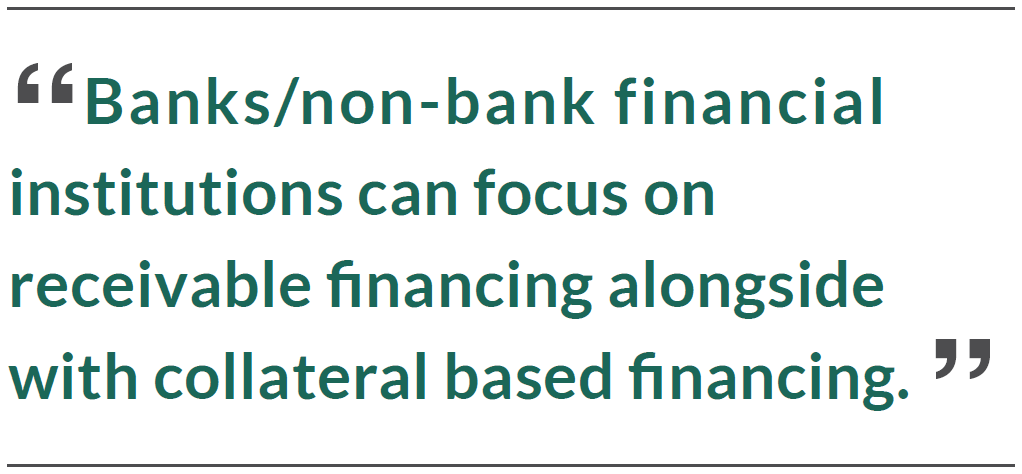Shaikh Md. Salim: General Manager, Bangladesh Bank
SME Financing in Bangladesh: Directions from Policy Level
In order to facilitate SME Financing, Bangladesh Bank has come up with many directive measures for the banks/FIs e.g. instruction on maintaining 20% of total loan portfolio in SME financing, rolling out credit guarantee schemes, lowering provisioning requirement for SME clients, single digit lending rate for women entrepreneurs and many more. MBR had the opportunity to have a one-to-one conversation with Mr. Shaikh Md. Salim, General Manager, SME & Special Programs Department (SMESPD) to get a birds eye view on SME Financing and the future role of Central Bank towards strengthening SME lending.

Shaikh Md. Salim
General Manager, Bangladesh Bank
MBR: From the perspective of a regulator, what is your opinion about the growth of the SME sector over the past years in Bangladesh?
Shaikh Md. Salim:
SME & Special Programmes Department of Bangladesh Bank started its journey in December 2009. This department has been working on the policy support towards ensuring country’s inclusive & sustainable economic growth through SME development with a special focus on women entrepreneurship development. Over the passage of time the purview of the SME is expanded & now the SME is turned into CMSME which stands for Cottage, Micro, Small & Medium Enterprises. This initiative included home based entrepreneurs. On the other hand we have introduced group based lending which played as a role of catalyst in the growth of cottage and micro segment.
A target based lending to Cottage, Micro, Small & Medium Enterprises (CMSMEs) has been initiated since the inception of this department. All banks & Financial Institutions have been disbursing credit to CMSMEs following their indicative target set on a calendar year (Jan-Dec) basis. If you see the trend over the last few years, the sector is on a growth trail & exceeding the target in recent years. From 2010-2018, the total disbursement of SME sector is BDT 942,343 crore, which is commendable. We divided the target into different categories under Manufacturing, Services & Trading Sectors and prioritized the small segment. Considering the importance of the small segment in CMSME sector, minimum 50% of the total CMSME financing has been set for Cottage, Micro & small segment. We have also re-set the sector wise targets. The present targets to be achieved for manufacturing and service sector are 30% & 15% of total CMSME portfolio and these are to be increased to 40% & 25% consecutively by 2021. Presently maximum 55% of total CMSME portfolio of a Bank/FI can be given to Trading Sector which is to be lowering down to 35% by 2021. Actually we are encouraging manufacturing & service sectors finance to facilitate employment generation in the country.
MBR: How can Banks/FIs strengthen their role to expand their reach in SME market?
Shaikh Md. Salim:
The role of CMSME is indispensable for the economic development of a country like Bangladesh. This sector is labor intensive with short gestation period, it is capable of increasing national income as well as rapid employment generation; achieving Sustainable Development Goals (SDGs) especially eradication of extreme poverty and hunger, gender equality and women empowerment. So we all should focus on CMSME enterprise financing.
It is up to the Bank/FIs’ best judgment whether they will lend money to SME sector or not . At present, many big corporate loans have been stacking up and the risk for Banks/FIs is increasing. Lending money to CMSME sector can reduce the risk of large amount of default loans, ensure portfolio granularity by diversifying the risk. Therefore, the top level management of the Banks/FIs have to understand the necessity and impact of SME financing on its portfolio. The chance of profitability from lending money to SME sector is high, therefore those who have targeted SME from the very beginning and concentrated less on the corporate, have been maintaining a growing portfolio.
MBR: What is your opinion regarding the development of women entrepreneurship in SME sector? How can Banks/FIs expand the span of women entrepreneurs’ loan?
Shaikh Md. Salim:
As I said earlier this department has a special focus on women entrepreneurship development since its inception. Financial Inclusion has been prioritized in Bangladesh Bank’s policy to include small entrepreneurs and a large number of women in Financial activities. To ensure this, Bangladesh Bank has taken a number of policy initiatives like refinance facility for women entrepreneur at low cost (bank rate + 4%), regulatory provision for collateral free loan for women entrepreneurs against personal guarantee up to BDT 25 lac, group based lending, Simplified Loan Application Form in Bengali etc. According to the policy of Bangladesh Bank, Banks/FIs must maintain 10% of their total CMSME loan portfolio in financing women entrepreneurs. By 2021, the percentage will have to rise to 15%. This policy will include more women in the financial system which will ultimately expedite women empowerment.
Experience shows that most of the women entrepreneurs are not educated; they are lacking behind of financial literacy knowledge. Firstly, their capacity needs to be developed. Bangladesh Bank instructed every Banks/Non-Bank Financial Institutions to find out at least three new women entrepreneurs for imparting training to develop their capacity and extend credit facilities to minimum one of them by each year per branch. If one bank cannot afford to organize the training, they might do it in a combined manner. If banks/FIs can do this they will be ultimate beneficiary.
The entrepreneurs are not well aware about all the facilities offered by the bank, which is a lack of communication from the bankers’ side. Another thing is, most of the women entrepreneurs do not know about all the formalities and procedures of loan application and setting up business. So if the banks help them with this taking a minimum charge if needed, that would be a great help for the women entrepreneurs and also another source of income for the banks. As per Bangladesh Bank instruction, there should be a dedicated desk in every bank branch for facilitation the women entrepreneurs, but in most of the banks these desks actually lack of dedicated personnel at service. Whenever the women entrepreneurs come to collect information, the banks do not give them the whole picture at a time. So there should be a one stop service to facilitate them.
MBR: Bangladesh Bank already took commendable initiatives/schemes to penetrate into the SME Market. What initiatives from the Central Bank are expected in future to strengthen the SME sector?
Shaikh Md. Salim:
We have to address the major problems in this sector and to understand it. We do not have any central national database of SME clients and the information of the lenders. It is not possible for the banks/non-bank financial institutions to set up it by their own but the government may take initiatives to gather information of CMSME business by ensuring maintenance of database of clients that all FIs can access. It would be easy for us to track down the whole problem if the government wants to regulate the process through Bangladesh Bank. The database will help to identify the client and their previous loan status easily. This will help to reduce the loan processing time. Information regarding primary business information (e.g. nature of business, no. of employees, investment, business turnover etc.) can be stored in the database.
Banks/Non-Bank Financial Institution should operate capacity development programs to increase the loan portfolio and get more people under the reach of credit. Banks can also add e-learning feature in their website to give more financial literacy services to the entrepreneurs.

MBR: What do you think, as regulator, are the prime challenges of SME sector?
Shaikh Md. Salim:
About half of the population of our country is women & women participation in the mainstream economy is crucial for balanced economic development. Women entrepreneurs face different types of problems in our country. Inadequate capital, access to capital, small size of capital, lack of startup capital, lac of knowledge & sufficient information, Lack in access to market & lack of market demand related information are mentionable problems. Finally, most of the banks/non-bank financial institutions offer collateral based financing, sometimes which is not sufficient enough for the growth of CMSME.
They should give emphasis to innovate more SME friendly loan products to cater CMSME demand. Besides, institutional support from different government and non-government institutions is required for development and growth of women entrepreneur. Moreover, legal and institutional guidance are also highly required to make a trade-off between challenges and future prospects of women entrepreneur so that they can feel encouraged creating new venture with new hope.
Monthly Business Review- April 2019
Banks/FIs deserve accolades for expanding their SME portfolio over the past years and thus exceeding the SME disbursement target given by the Central Bank. However, the financial industry is still saddled with some concerns when SME lending is in question. Banks find it hard to consider SME loans as a core focus segment because of the higher cost of monitoring and underwriting, as SMEs are scattered all across the country and are unstructured in terms of account management. Therefore, underwriting of SMEs is expensive and time-consuming since the cost and underwriting process for all borrowers (irrespective of size and value) are similar. FIs can come up with scoring models for SME businesses by deploying technology leveraging on the huge set of customer data. Also, more than just funding, small businesses require business management tools and advice on how to
diligently manage working capital and FIs are the best fit to help them out in this scenario.
Lastly, this is worthy to mention that the whole financial industry played a crucial role in building SME ecosystem and educating the market at this level, with prudent guidance from the Central Bank. Now, expanding the SME market reach in a low cost manner, by deploying technology should be the priority of Banks or FIs.
Download View